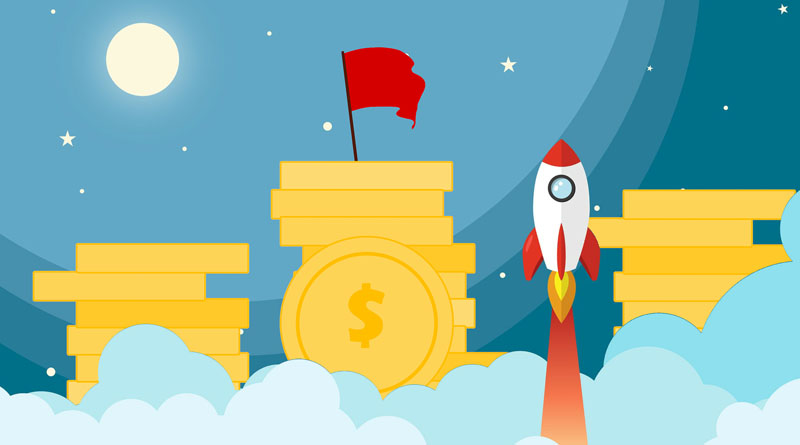Amidst all the latest trends and tricks of social media, people often think email marketing is dead. However, the statistics speak a different story. Email marketing remains the best way to nurture leads.
But there is a difference between selling a product versus selling a service through emails.
After all, when you sell a product, the customer has something tangible to look at. They can study its features, compare prices and make an informed decision. But when you sell a service, what does your customer do?
How do they judge and price your product?
Well: They will judge you on the authenticity you build every day!
This is why selling services for coaches and consultants demand unique email marketing strategies than selling physical products. You have to nurture your leads, educate them, create awareness, and wait for them to trust you.
If you are a coach or a consultant actively looking to rock your email marketing and generate non-stop leads for your business, this post is for you!
Here Are 8 Precious Email Marketing Techniques for Coaches & Consultants:
1. Precisely Define Your Target Audience
A mistake businesses often make is cold-emailing a vast audience without doing adequate research beforehand. As a result, they don’t realize that most of their efforts are vain. Finding leads will be like searching for the needle in a haystack if you do not define your target audience beforehand.
- To define your TA, ask yourself these questions:
- What age group do your target customers belong to?
- Are you targeting businesses or individual customers?
- Is your service gender-specific?
- Where is your target group located?
- What kind of activity are they doing on social media?
- What type of content are they engaging with, and whom are they following?
2. Know Your TG’s Pain Points
Not knowing your target audience’s pain points is a sure-shot way of winning your customers’ hearts. If you present yourself with a solution to the problem they are facing in their lives, it will amplify the chances of your target group spending their time reading your email.
- Online platforms where you can find your TG’s queries and pain points.
- Quora
- Answer The Public
- Social Media
- Simple Google Search
Simply search for the keywords you are planning to curate your email on these platforms, and you will get tons of ideas about what your target customers are searching for online.
Once you have a clear idea of the problems plaguing your audience, you can deliver targeted messages that’ll make it easier for you to convert them into paying customers using a sales process flowchart.
3. Email Subject Line is a Make or Break
The subject line is a critical part of your email. With statistics saying 47% of email recipients open an email based on how a subject line connects with them, it becomes necessary to craft a well-researched subject line that makes your audience click on it.
Here’s how you can write a delete-proof subject line for your email-
- Personalize it (by adding customer’s name or anything that connects with them)
- Ask question
- Insert data & stats
- Generate curiosity
- Strategize the first half of the subject line precisely
Personalization makes your customers feel unique about themselves. Stats from Super Office suggest that including a recipient’s name in an email’s subject line increases its open rates by up to 18.30%. Not only the subject line, but you can also personalize your email by keeping it aligned with the tone of your customer.
4. Offer FREEbies
When you send an email newsletter to your subscribers, make sure you give them some FREE and valuable resources like an ebook, a worksheet, or a free consultation. Good lead magnets increase website traffic, reinforce your credibility, and are a great way to show prospective leads that you are trustworthy and knowledgeable. But don’t just offer them some random free stuff. Instead, invest your time creating something truly unique and engaging and see how warm leads convert into hot leads.
5. Set Up An Autoresponder
Leveraging automation in your email marketing can be a game-changer for your business. Setting up auto-replies in your emails helps you build one-to-one communication with your leads and keeps them hooked. You can set up welcome auto-replies so that your subscribers don’t feel ghosted after joining your list. You can also opt for an autoresponder cycle to be more visible in front of your customers.
6. Add Social Proofs
As per the Local Consumer Review Survey 2020, 87% of consumers read reviews before making a purchasing decision, and 79% said they trust online reviews as much as personal recommendations. Social proofs matter! When others speak highly about your services, it makes a big difference compared to when you keep talking about your services. So, go ahead and talk about the number of people who have already joined your email list or include your previous client testimonials. Doing so will convince prospective leads about your achievements and show them the genuineness of your service.
7. Educate, not Sell
This is the most critical factor differentiating between selling products and services. People tend to spend their resources on services/courses they genuinely trust. This is why paid marketing doesn’t help much in B2B or the service market. So, if you want them to trust you, show them that you are an expert at what you do.
8. Add CTA Buttons
While designing CTAs, drop the idea of boring hyperlink texts and switch to the call-to-action buttons right now! Because CTA buttons increase the click-through rates by a whopping 28%. That’s how an attractive UX levels up your content game. But while designing the CTA buttons, be more creative with your words. Avoid using anything that’s too robotic. For example, instead of “Learn more,” you can write it as “Tell me more!” or anything that sounds more human.
Conclusion
Though there’s a massive demand for coaches and consultants in the market, only a handful of those who understand the market needs and strategize accordingly actually make it through. So, play well and win your game!












